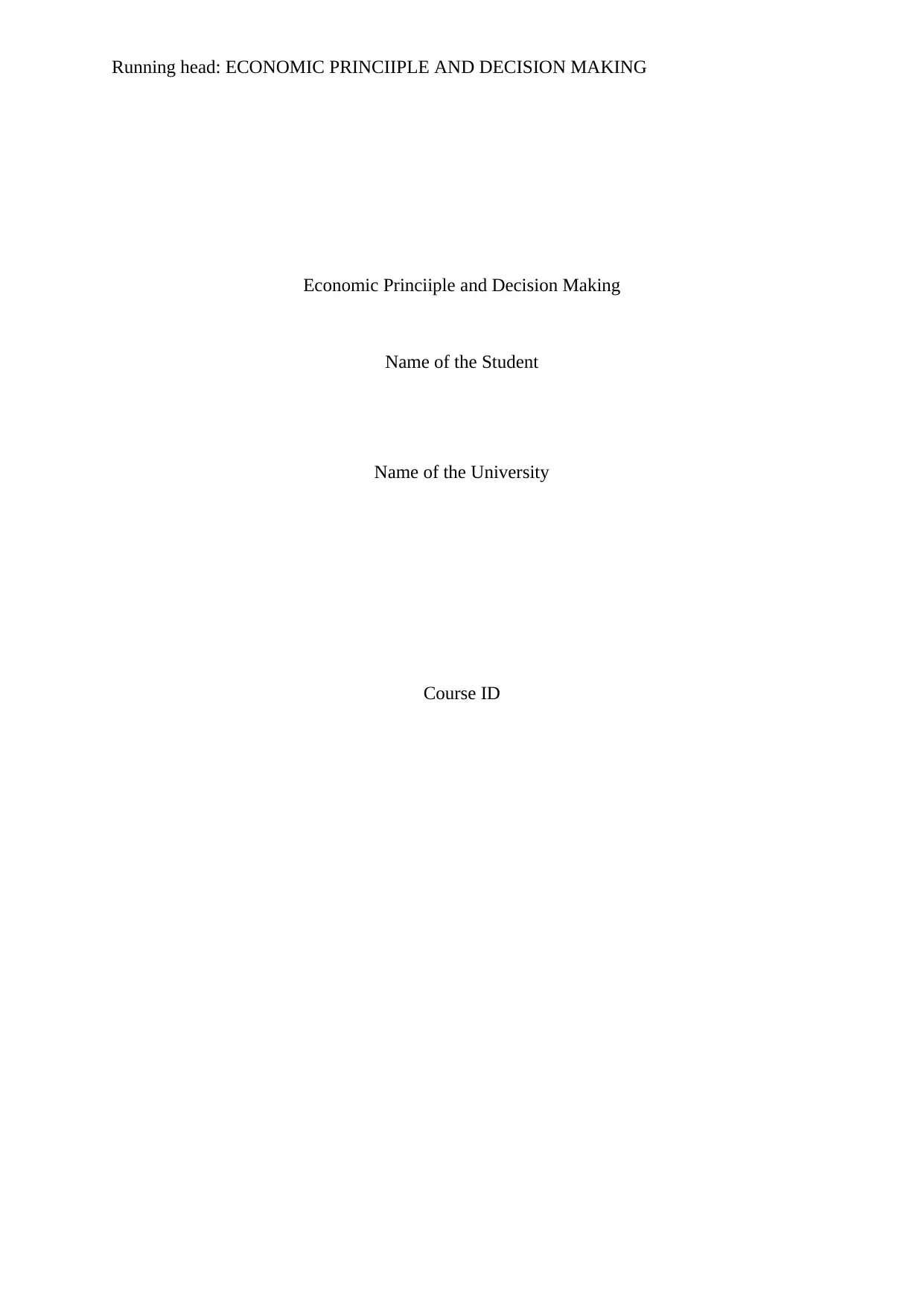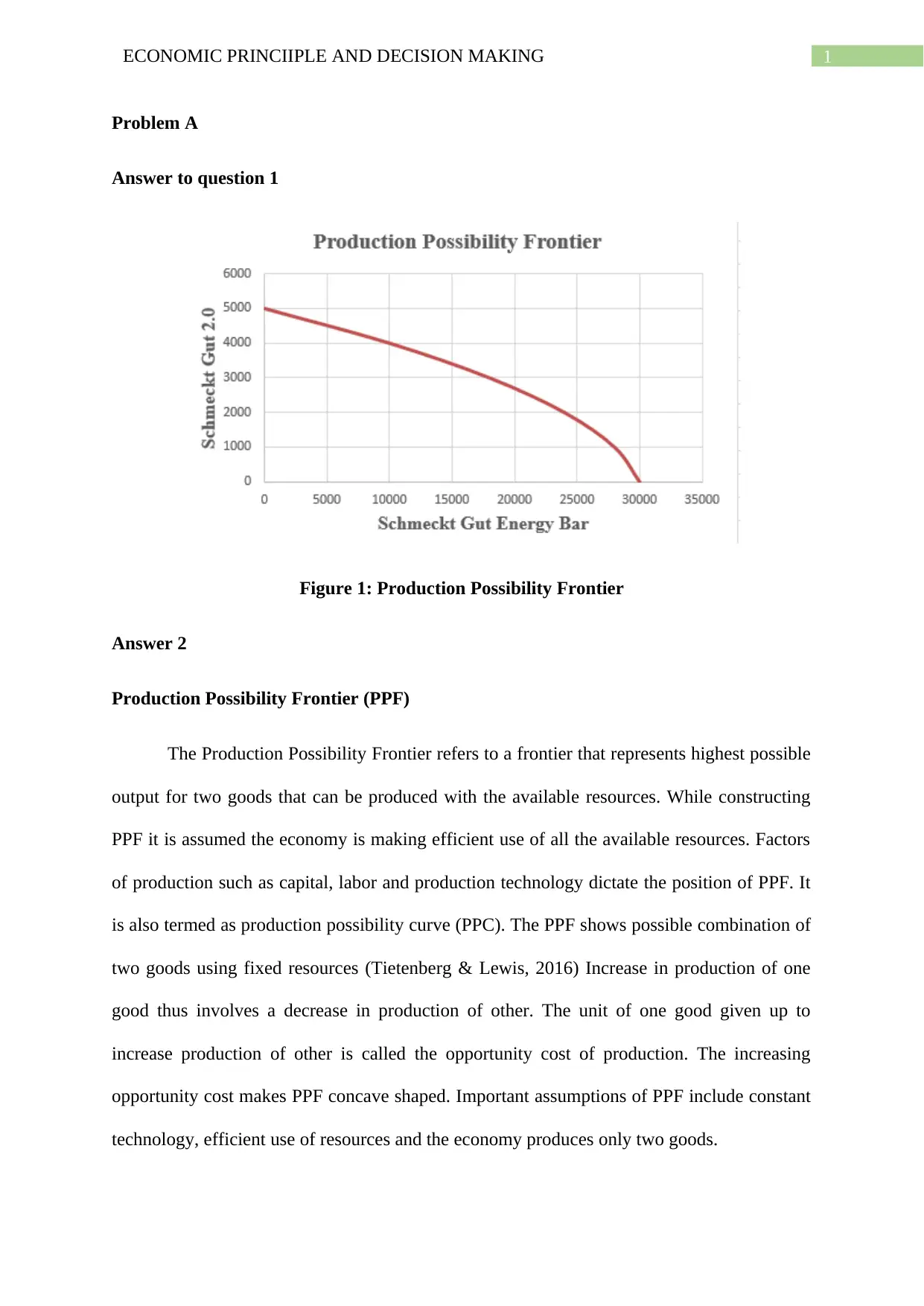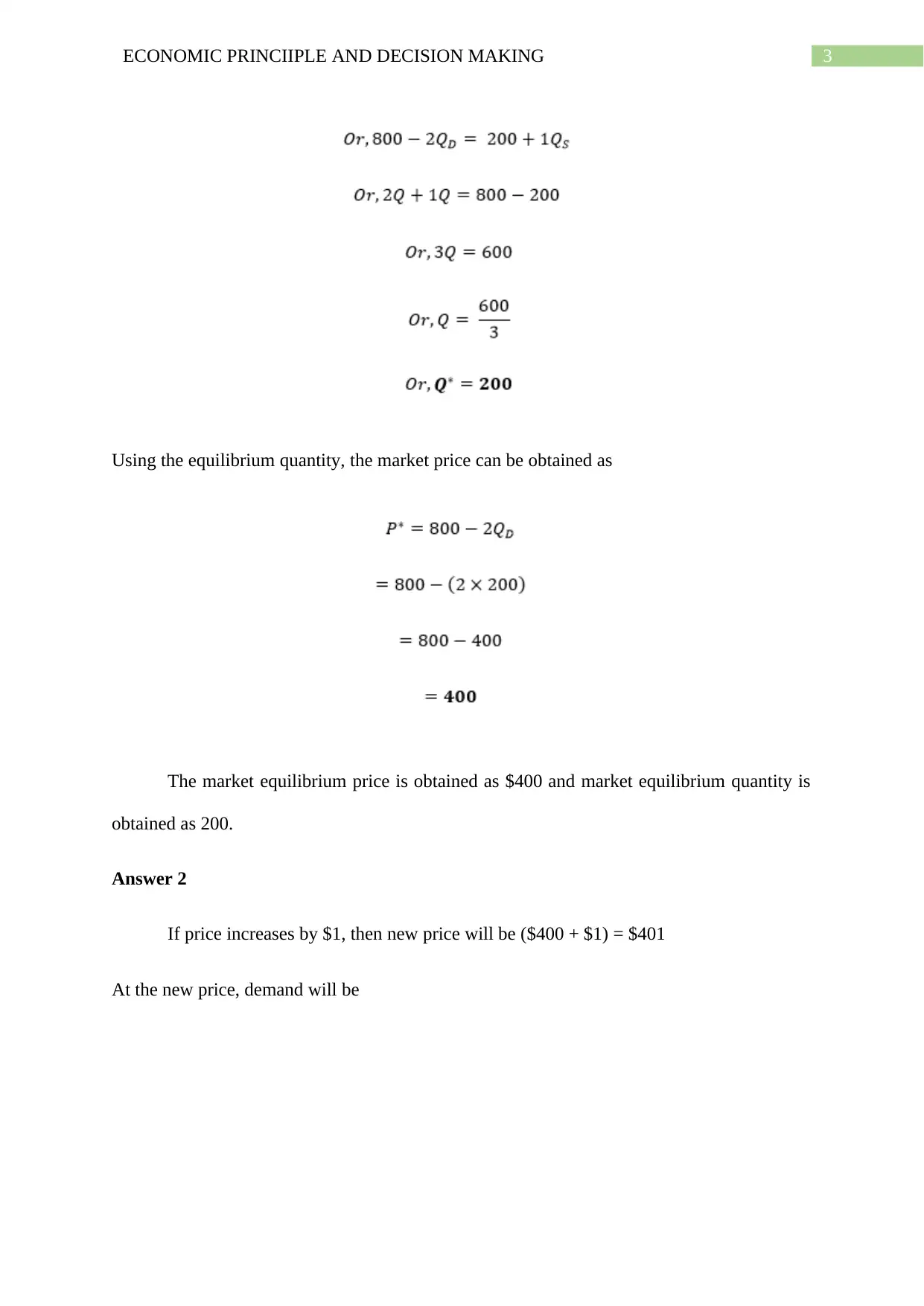Economic Principles: Production Possibility Frontier and Equilibrium
VerifiedAdded on 2023/04/24
|6
|703
|262
Homework Assignment
AI Summary
This assignment delves into the application of economic principles in decision-making, focusing on the Production Possibility Frontier (PPF) and market equilibrium. It explains the concept of PPF, its assumptions, and its relevance in understanding production trade-offs. The assignment addresses a scenario involving increased demand for two goods, Schmeckt Gut 2.0 and Schmeckt Gut Energy Bars, and suggests strategies such as adopting new production technology, exploring new resources, and specializing resources to meet the increased demand. Furthermore, the assignment calculates market equilibrium price and quantity for energy bars using given demand and supply functions, and it analyzes the impact of a price increase on demand and supply, thereby validating the laws of demand and supply. Desklib provides access to this solution and many other resources for students.
1 out of 6











![[object Object]](/_next/static/media/star-bottom.7253800d.svg)